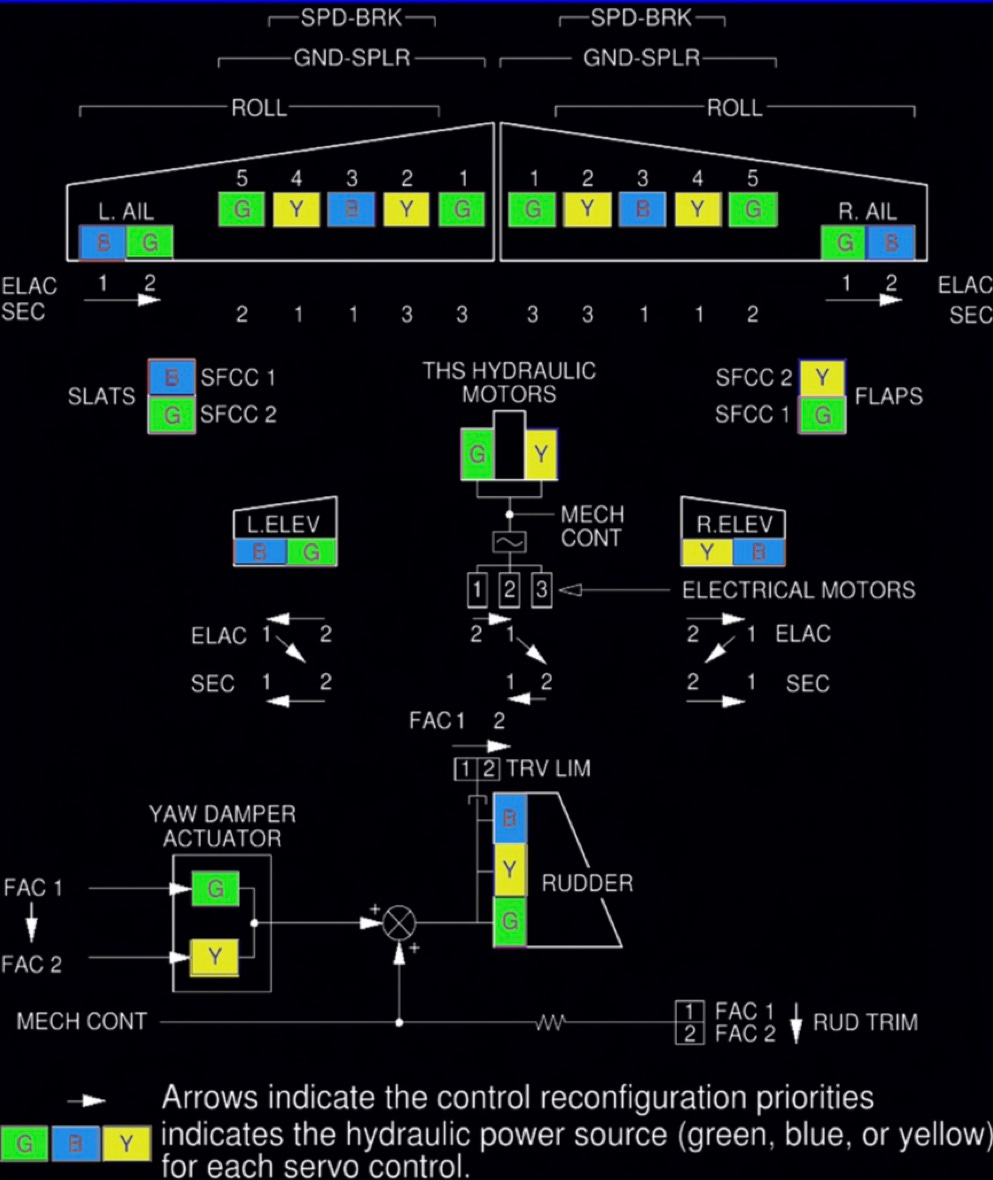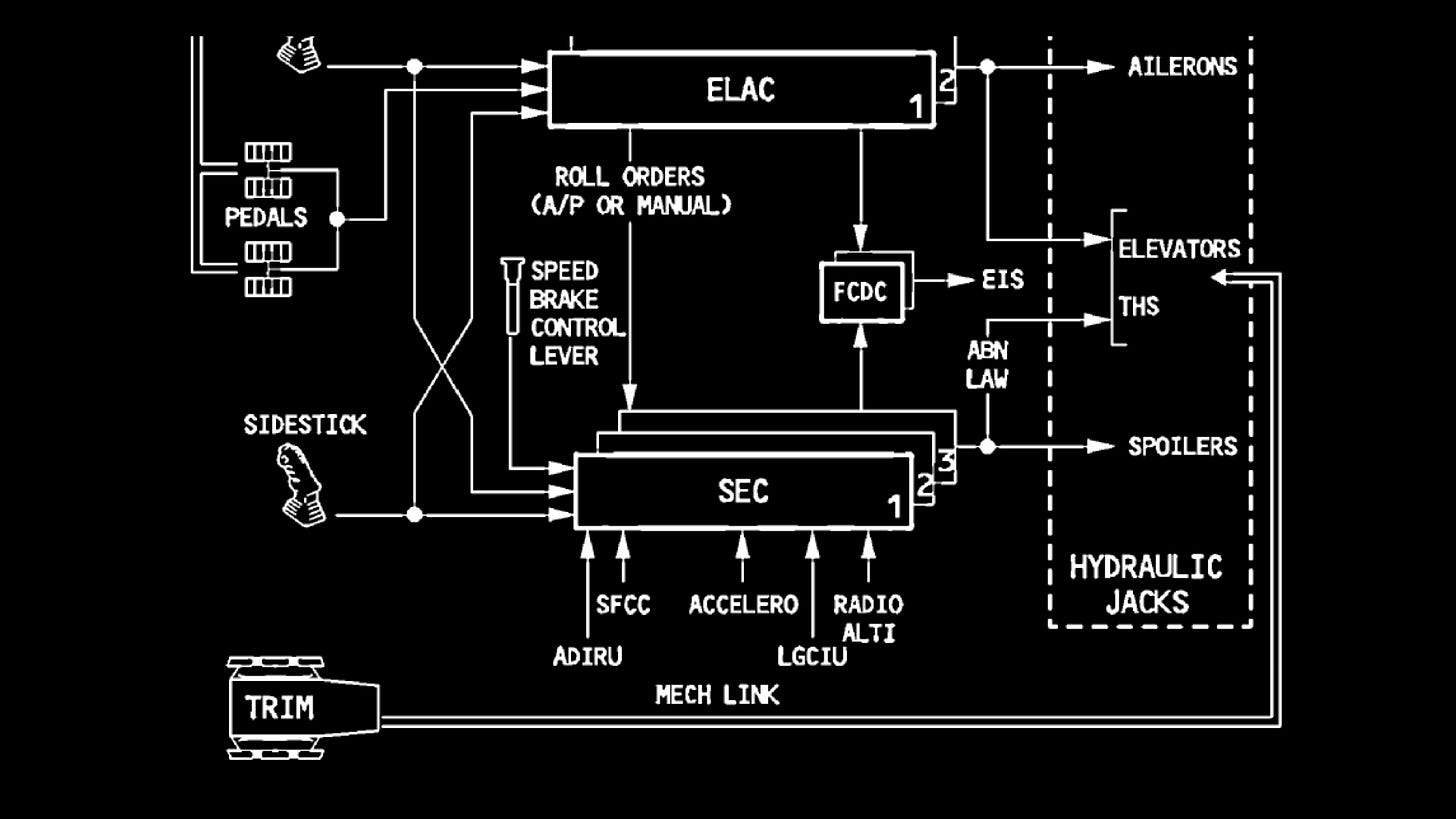Hey everyone and welcome back to this A320 Knowledge deep dive.
Today, we’re diving into the SECs of the Airbus A320. We’ll break down what SECs do, how they interact with other flight systems, and why they are critical for redundancy and fault management.
Let’s jump right in.
Insights at a Glance:
Managing Flight Surfaces: The SECs primarily control spoilers and serve as a backup for elevators and the trimmable horizontal stabilizer (THS).
Critical Inputs & Redundancy: SECs process information from various systems, including air data, radio altimeters, and accelerometers, ensuring smooth operation even in the event of failures.
Impact on Autopilot & Braking: SECs influence what the autopilot can command and play a key role in deploying ground spoilers and reverse thrust.
Failure Management: A malfunctioning SEC leads to spoiler retraction, reduced braking ability, and degraded flight laws, requiring specific pilot actions.
Now, let’s explore these concepts in more detail.
Subscribe to the A320 Knowledge YouTube Channel!
Introduction to the A320’s Flight Control System
The Airbus A320 is one of the most widely used commercial aircraft in the world, known for its advanced flight control system. This system is based on a "fly-by-wire" concept, meaning the aircraft’s flight control surfaces, like ailerons, elevators, and spoilers, are controlled electronically rather than via traditional mechanical linkages. One of the key players in this system is the SEC (Spoiler Elevator Computer), which, alongside other flight control computers, helps maintain stability, efficiency, and safety.
The A320’s flight control system features seven flight control computers, including three SECs. These computers process inputs from the pilot, autopilot, and various aircraft sensors to determine the most optimal flight control surface movement based on the flight laws (Normal Law, Alternate Law, and Direct Law). The SECs specifically manage critical surfaces such as spoilers and elevators, ensuring precise control over the aircraft’s behavior.
What Are SECs, and How Do They Work?
In total, the Airbus A320 is equipped with three SECs, each playing a pivotal role in controlling specific aspects of the aircraft’s flight:
SEC 1 manages spoilers 3 and 4.
SEC 2 handles spoilers 5.
SEC 3 controls spoilers 1 and 2, and uniquely, does not act as a backup for the elevators or the Trimmable Horizontal Stabilizer (THS), unlike SECs 1 and 2.
These three computers serve as the primary controllers for spoiler operation and as backup for elevator and pitch control. The redundancy of the system means that if one SEC fails, others can step in to maintain control over the aircraft, providing crucial fault tolerance in-flight.
The SECs receive inputs from various critical sources:
Air Data Inertial Reference Systems (ADIRS) provide data like airspeed, altitude, and aircraft attitude.
Slat/Flap Control Computers (SFCCs) inform the SECs about slat and flap positions.
Landing Gear Control Interface Units (LGCIUs) send data on the position of the landing gear.
Radio Altimeters (RAs) and accelerometers contribute altitude and movement information, respectively.
The SECs must process this data and communicate with Flight Control Data Concentrators (FCDCs), which in turn relay the information to the aircraft’s electronic instrument system and centralized fault display system for the pilots to monitor. This constant flow of data ensures that the aircraft remains in stable flight, even during varying environmental and operational conditions.
Redundancy and Fault Management
One of the most significant aspects of the SEC system is its redundancy. In the event of an SEC malfunction, the system ensures that control of the affected flight control surfaces is reassigned to another functional SEC or backup system.
Key Fault Management Procedures:
If a SEC failure occurs, the associated spoilers will be automatically retracted to prevent them from causing adverse flight control issues. In some instances, if multiple SECs fail, the aircraft will operate in Alternate Law, where the flight control surfaces are no longer actively managed by the SECs, but by simpler direct control mechanisms (like the ailerons).
In the case of a DC BUS 2 fault, both SEC 2 and SEC 3 may fail, leaving the aircraft with reduced redundancy and less effective braking. This results in a loss of load alleviation (LAF) and degraded braking ability.
The reset procedure is straightforward: when an SEC fails, the crew will attempt to reset the affected system by switching it off and then on. If this fails, the SEC is deactivated to avoid sending faulty inputs that might jeopardize safe flight control.
In real-world scenarios, pilots are trained to recognize these failure modes and respond accordingly. This training, combined with the aircraft's advanced fault management system, enables safe operations even when certain systems experience faults or anomalies.
The Role of SECs in Autopilot Functions and Reverse Thrust
The SECs play a vital role in auto functions such as the deployment of ground spoilers and reverse thrust, particularly during landing and deceleration phases. The ability to automatically deploy these systems relies on the availability of at least two operational SECs. Specifically:
Ground spoilers: These are essential for increasing drag and reducing lift during landing, helping the aircraft stay in contact with the runway. The SECs coordinate this deployment based on inputs from the aircraft’s flight parameters.
Reverse thrust: To enable reverse thrust deployment (important for slowing down the aircraft after landing), at least one SEC must be operational to process the Thrust Lever Angle (TLA) signal. If none of the SECs are operational, the aircraft cannot utilize reverse thrust.
This underscores the importance of maintaining the operational integrity of the SEC system, especially during critical phases of flight such as approach and landing.
Managing SEC Failures During Critical Phases of Flight
Handling SEC failures is not just a matter of relying on backup systems; it also requires active decision-making by the flight crew. Here’s how failure scenarios can impact flight operations:
SEC 1 Failure: The VLS (Minimum Selectable Speed) will not be updated or corrected, affecting the aircraft’s speed management. Additionally, the speed brake will become unusable.
SEC 2 or SEC 3 Failure: Loss of these SECs can result in the inability to manage spoilers, compromising the aircraft’s ability to manage speed and drag effectively.
Loss of All Three SECs: In the event of a complete SEC failure, the aircraft will transition into Alternate Law, where flight protections such as stall prevention are no longer available. This leaves roll control to be managed solely by the ailerons, requiring manual control from the pilots.
Pilots' Training and Preparedness for SEC Failures
Understanding the potential consequences of SEC failures is critical for pilots, especially when flying the A320 in challenging conditions. Training programs ensure that pilots can execute procedures such as resetting the SEC, managing spoilers, and adjusting speed controls when necessary.
The following are examples of the procedures pilots may follow when handling SEC failures:
Approach Briefing: Pilots must adjust their approach briefings to account for possible SEC failures, especially when entering Alternate Law or dealing with an SEC malfunction during landing.
ECAM Alerts: The Electronic Centralized Aircraft Monitor (ECAM) provides real-time alerts and procedures that guide the flight crew through the troubleshooting and mitigation steps.
Conclusion
The SECs in the A320’s fly-by-wire system are more than just controllers for spoilers and elevators; they are a critical layer of redundancy and fault management that ensures the aircraft’s stability and safety, even when things go wrong. Understanding how they work, how failures are managed, and how pilots can respond to such failures is essential for anyone interested in aviation and aircraft systems.
Key Takeaways:
The SEC system plays a pivotal role in managing flight control surfaces such as spoilers and elevators on the A320.
Redundancy and fault management ensure that SEC failures do not compromise flight safety, with backup systems taking over when needed.
The SECs are crucial for auto functions like reverse thrust and ground spoilers, which are vital for safe landings.
Pilots are trained to handle SEC failures through well-established procedures, ensuring the aircraft remains controllable under a wide range of operational conditions.
If you found this deep dive helpful, consider sharing it with others or leaving a comment below with your thoughts.
I’ll see you in the next one.
A320 Knowledge




